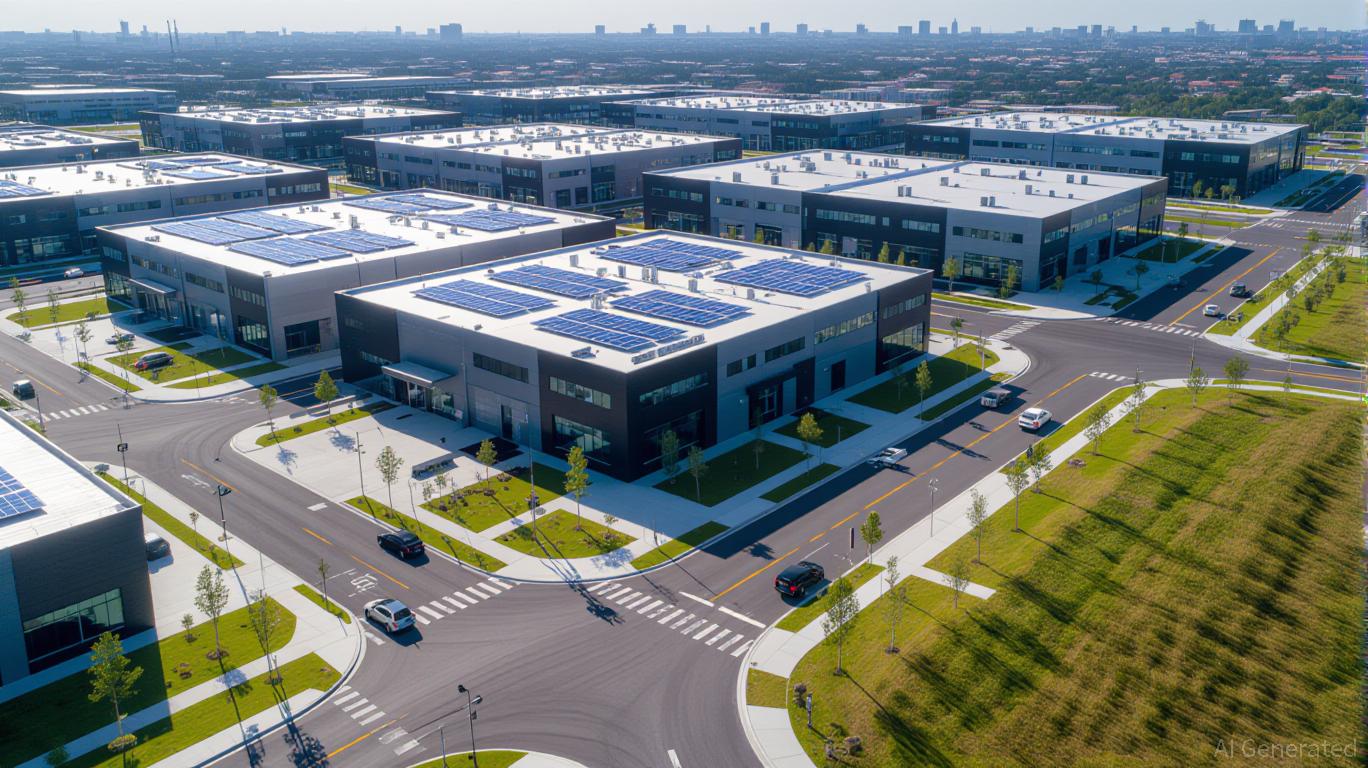Webster, NY's Approach to Industrial Growth and the Transformation of the Xerox Campus
- Webster , NY, is transforming its Xerox campus brownfield into a high-growth industrial hub via infrastructure grants and zoning reforms. - FAST NY grants and $283M state funding target road, sewer, and electrical upgrades to make the site competitive with coastal industrial markets. - Zoning changes enable mixed-use development, including advanced manufacturing and residential components, creating a "bluefield" model. - State programs like Brownfield Opportunity Area reduce redevelopment risks through t
Infrastructure as a Catalyst: Grants Paving the Way
Webster’s revitalization took off with the awarding of a

The benefits of these grants reach far beyond the initial construction phase. For example, the FAST NY initiative,
Zoning Innovations: Turning Brownfields into Bluefields
Zoning adjustments have played a crucial role as well. Conventional industrial zoning often limits mixed-use projects, but Webster’s changes—part of the Reimagine Webster Initiative—have redefined parts of the Xerox property to support advanced manufacturing, logistics, and even residential uses
One standout project is the Community Access Project, which
Measuring Impact: Real Estate Trends and Economic Ripple Effects
The positive outcomes of these strategies are becoming evident. As of October 2025,
Additionally,
Investor Perspective: Managing Risk and Looking Forward
For those investing in industrial real estate, Webster’s story marks a significant shift. In the past, secondary markets were often seen as risky due to limited infrastructure and uncertain regulations. Now, targeted efforts like FAST NY grants and zoning updates are turning these weaknesses into strengths. The Xerox campus is a case in point: once considered unsuitable, it is now attracting fast-growing industries, thanks to public-private collaborations that help shoulder initial costs.
Moving forward, Webster’s continued progress will depend on sustaining this momentum.
Conclusion
Webster, NY, is not an exception but a sign of a larger movement: intentionally increasing the value of industrial real estate through infrastructure and policy. The redevelopment of the Xerox campus shows that with the right combination of funding, flexible zoning, and strategic planning, even the most challenging sites can become engines for economic growth. For investors, the message is clear: secondary markets have moved to the forefront, where smart public investment and private innovation combine to reveal value that was once hidden.
Disclaimer: The content of this article solely reflects the author's opinion and does not represent the platform in any capacity. This article is not intended to serve as a reference for making investment decisions.
You may also like
LUNA Remains Unchanged in 24 Hours as Annual Decline Hits 82% During Market Consolidation
- LUNA remains flat at $0.0747, with a 4.04% 7-day gain but an 82% annual drop, reflecting prolonged bearish trends. - SpaceX’s $105.4M BTC transfer and Tesla’s $1B BTC holdings highlight institutional crypto strategies, though indirect to LUNA’s trajectory. - South Korea’s Nuri rocket success underscores private-sector collaboration in advancing space programs, mirroring global tech trends. - LUNA’s prolonged bearish trend and market consolidation persist amid strategic institutional moves, with recovery
Bitcoin Updates Today: Tether’s Bitcoin Investment Compared to Stability: S&P Raises Concerns Over Unstable Peg
- S&P Global Ratings downgraded Tether's USDT to "weak" due to 5.6% Bitcoin exposure exceeding its 3.9% overcollateralization threshold and limited reserve transparency. - Tether CEO defended the model, citing no redemption refusals and $10B 2025 net profit, while S&P warned Bitcoin/gold price drops could trigger undercollateralization risks. - Market turbulence saw $3.5B Bitcoin ETF outflows and $9.9B Bitcoin holdings, with Tether expanding into gold producers and crypto lending despite regulatory scrutin
Ethereum Updates Today: Blockchain’s Cleanliness Transformation: Privacy Moves from a Choice to a Necessity
- Ethereum co-founder Vitalik Buterin donated to privacy-focused projects Aztec Network and Kohaku, signaling blockchain's shift toward data protection as a core priority. - The Ignition Chain and Kohaku framework aim to address data breaches like SitusAMC by enabling private transactions via zero-knowledge proofs and protocol upgrades. - Ethereum's Fusaka upgrade (2025) and growing $1.2 trillion blockchain messaging market highlight privacy's rising economic and technical importance in decentralized syste

Australia’s Cryptocurrency Regulations Set to Unlock $24 Billion in Value While Enhancing Investor Protections
- Australia introduces 2025 Digital Assets Framework Bill to unlock $24B productivity gains while imposing strict client asset safeguards. - Legislation creates two new crypto financial product categories under Corporations Act, requiring AFSL licensing for platforms and tokenized custody services. - Exemptions for small operators (<$10M volume) balance innovation with regulation, aligning with global trends like U.S. GENIUS Act and SEC's Project Crypto. - Industry debates regulatory proportionality as Aus
